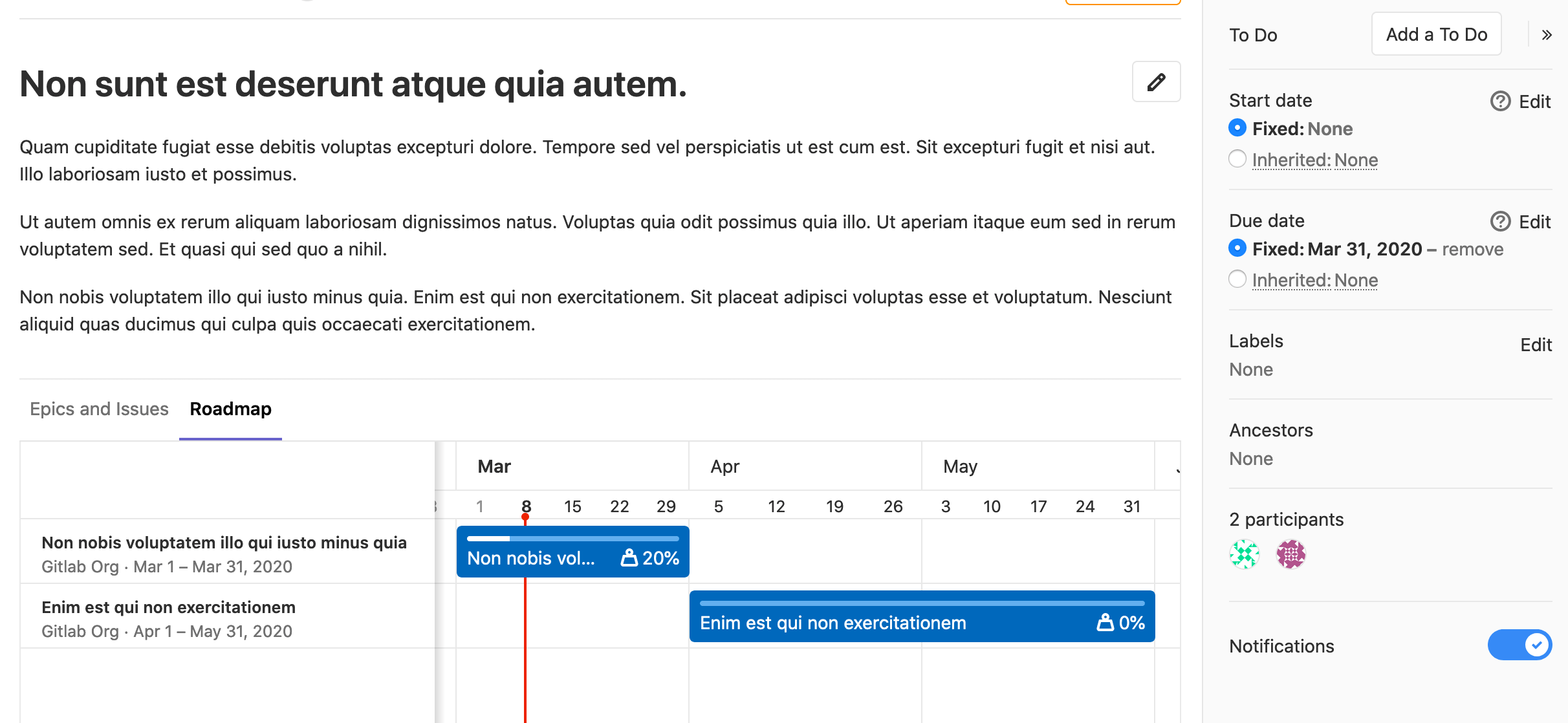Epics (PREMIUM)
- Introduced in GitLab Ultimate 10.2.
- Single-level epics were moved to GitLab Premium in 12.8.
When issues share a theme across projects and milestones, you can manage them by using epics.
You can also create child epics, and assign start and end dates, which creates a visual roadmap for you to view progress.
Use epics:
- When your team is working on a large feature that involves multiple discussions in different issues in different projects in a group.
- To track when the work for the group of issues is targeted to begin and end.
- To discuss and collaborate on feature ideas and scope at a high level.
Relationships between epics and issues
The possible relationships between epics and issues are:
- An epic is the parent of one or more issues.
- An epic is the parent of one or more child epics. For details see Multi-level child epics.
graph TD
Parent_epic --> Issue1
Parent_epic --> Child_epic
Child_epic --> Issue2Roadmap in epics (ULTIMATE)
Introduced in GitLab Ultimate 11.10.
If your epic contains one or more child epics that have a start or due date, a visual roadmap of the child epics is listed under the parent epic.
Permissions
If you have access to view an epic and an issue added to that epic, you can view the issue in the epic's issue list.
If you have access to edit an epic and an issue added to that epic, you can add the issue to or remove it from the epic.
For a given group, the visibility of all projects must be the same as the group, or less restrictive. That means if you have access to a group's epic, then you already have access to its projects' issues.
You can also consult the group permissions table.
Related topics
- Manage epics and multi-level child epics.
- Turn on notifications for about epic events.
- Award an emoji to an epic or its comments.
- Collaborate on an epic by posting comments in a thread.
- Use health status to track your progress.
